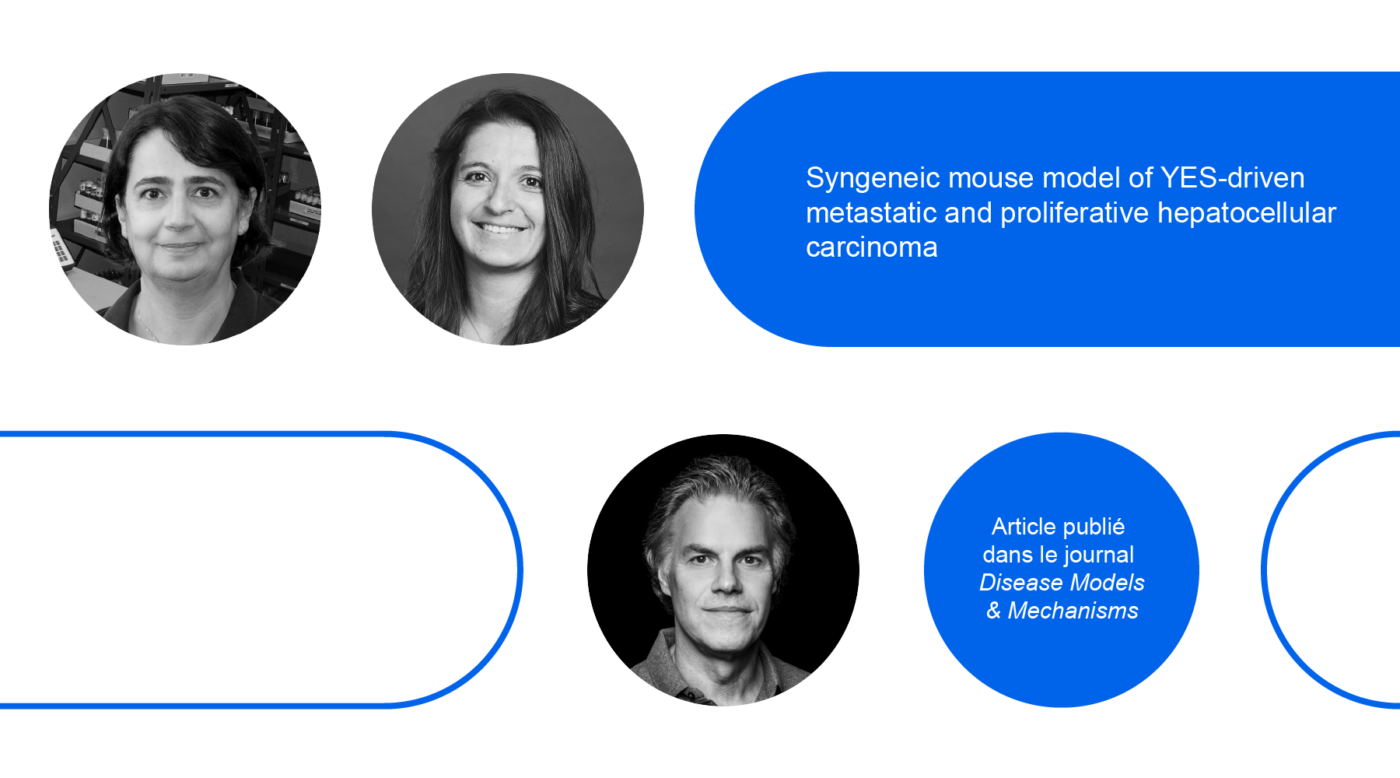News
Development of a tool to study new treatments for liver cancer
Published on September 18, 2024
The team led by Sylvain Meloche, Director of IRIC’s Signalling and Cell Growth Research Unit, has developed a new preclinical model for the study of the most common subtype of liver cancer. Published in the journal Disease Models & Mechanisms, the work was carried out by research associate Laure Voisin and research advisor Marjorie Lapouge. Vincent Quoc-HuyTrinh, Director of IRIC’s Digital Histology and Advanced Pathology Research Unit, also contributed to the study.
In search of a clinically relevant study model
Liver cancer is a major health issue worldwide: the sixth most common cancer, and the third most deadly. One subtype in particular, hepatocellular carcinoma (HCC), accounts for 80-90% of liver cancers. Often diagnosed at an advanced stage and ineffectively targeted by the few existing treatments, HCC does not offer a favorable prognosis for patients.
The Meloche laboratory team set out to fill an essential need in the identification of new therapies targeting HCC: the development of a preclinical model mimicking advanced human HCC as accurately as possible. To achieve this, the team established a cell line from genetically modified murine liver tumors: the HepYF line.
HepYF: a model that reproduces the pathophysiological features of aggressive and metastatic HCC
Several advantages make the HepYF line a good model for studying liver cancers. It generates tumors that grow rapidly, predictably and reproducibly, and are representative of the most aggressive forms of metastatic HCC.
Furthermore, the HepYF line offers a syngeneic model: it is derived from murine specimens that possess the same genetic background as those into which it will be injected for carcinogenesis analyses or preclinical studies. Perceived as “self” by the immune system, it is one of the few models that can be used to analyze the immune response against the tumor and evaluate immunotherapy options.
Thanks to these characteristics, the HepYF model developed by the Meloche laboratory will enable a better understanding of HCC pathogenesis. It will also be very useful for testing new molecules and immunotherapies that could improve the range of treatments available for liver cancers.
Cited study
Voisin L, Lapouge M, Saba-El-Leil MK, Gombos M, Javary J, Trinh VQ, Meloche S. (2024) Syngeneic mouse model of YES-driven metastatic and proliferative hepatocellular carcinoma, Dis Model Mech 17 (7): dmm050553. https://doi.org/10.1242/dmm.050553
